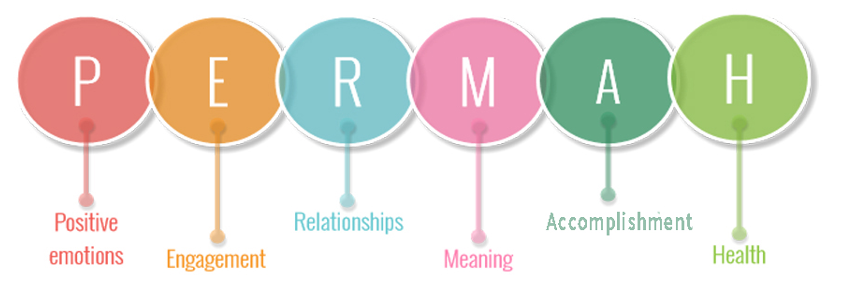When it comes to teachers’ wellbeing, many will wear the expert’s hat and discuss how important it is for teachers to sleep well, eat healthy, exercise, and engage with an activity of interest to them. This article is not against any of that, yet this article is on a mission to help you dig a little deeper to go beyond your sleep, food, and exercise habits as a teacher.
School or Jail?
Let us start with a simple question: School vs Jail, what comes to your mind? This question might sound ridiculous! Yet when giving it considerable thought, you would come up with an answer or multiple ones. Research findings suggest that school corridors in many cases are designed not only similarly to those that are in jails, but even by the same architects’ companies and the same designers! (Stanford, 2023). Other common factors between school and jail might come to your mind now, such as the fact that some children (and adults) are there against their will, all children have to wear the same uniform, eat at the same break/lunch time, and sometimes even the same food if the food is provided by the school, and not to mention the fact that schools get inspected, just like jails do. No wonder that 72% of all education professionals would describe themselves as ‘stressed’ (Education Support, 2019, cited in Crome & Cise, 2020).
Start with Self Awareness
For this reason, and others, this article argues that calling educators to simply have enough sleep, eat healthy, and exercise, is simply insufficient when it comes to teachers’ wellbeing. Clearly, there is a bigger fish to fry here, although those calls are very important for sure.
What is the bigger fish to fry here? It is “WHY”. Research emphasizes that many of the solutions start with analyzing the issue and breaking it down, through deep questioning that enhances your self-awareness as an educator (Sexton, 2019). Furthermore, it is crucial that your self-awareness journey covers the five elements of self-concept, thoughts, feelings, body & emotions.
Step a little outside from your life and start listening to those thoughts that shape your self-concept, have a thought about your feelings and emotions, wait, are they different? Well, emotions can be subconsciously driving you, whereas feelings, e.g., hunger, can be a bit simpler, and you can be more conscious of them (Wake First University, n.d.). Imagine observing your own self in the classroom, what do your body language and facial expressions say? And “why” are you implying those messages? Are they intentional? Are you just too tired to have that closer eye on you? Learn more about your strengths and core values, and don’t be intimidated to get that close and connected to yourself! Perhaps you might want to take the character strengths survey through this link
The “PERMAH” Wellbeing Model
PERMAH Model
If you have reached this far, then you are ready for the article to introduce the Well-being model “PERMAH” to you (Allen et al., 2022; Bott, 2023). This well-being model is holistic and education friendly, especially for schools.
P for Positive Emotions
Figure A: The Mood Thermometer (Weston, 2023)
Emotions are “feelings with meanings and messages”, therefore, acknowledging how you feel and understanding what’s beyond those feelings moves you from the area where you passively respond to the area where you are in control of your own actions, as they are based on your informed decisions. It is vital to note here that the normal ratio is 3 positive emotions vs 1 negative emotion, and that eliminating the negative emotions is a nonrealistic goal, but rather your goal should be how to act and deal with those emotions wisely (Bott, 2023).
Here is a tip for educators: how often do you get to acknowledge how you, or your students feel in a professional setting? This should be incorporated in your school day/week. This could be the perfect time for you to discuss introducing “The Mood Meter” or “The Zones of Regulation” to your school! (Weston, 2023).
E for Engagement
Teachers put in a lot of effort to ensure engaging their students in lessons, perhaps it is helpful to clearly structure what engagement means so that planning for engaging lessons and professional development sessions can feel a bit easier of a task! When we are engaged, we experience a “flow”, where five elements are present, those are:
A. selflessness, as your conscious of your own self disappears in favor to your conscious of what you are engaged with,
B. timelessness, where time really “flies by”,
C. effortlessness, where the level of the challenge or complexity of the task is not so high in a way that makes the task “undoable, or unachievable” for you,
D. mastery and richness, where there is a combination of what makes “high performance triangle” that consists of learning, productivity, and creativity,
E. and the mix of “head, heart, and hands”, where all your senses are participating in that “flowy” experience (Bott, 2023).
Figure B: Head Hand Heart: Lindenwood International School
R for Relationships
Whether we like it or not, our relationships have a phenomenal impact on our emotions and wellbeing in general. Therefore, remember the article’s first tip and learn your strengths and core values, as your mindful use of them will positively influence your relationships. To lead those relationships efficiently, consider how you make your students or educator colleagues feel seen, safe, and that they belong! (Bott, 2023).
Rapid Rapport-Knowledge City
Have you ever heard about Rapid Rapport? It implies that only 15-20 individuals will massively contribute to your success! A part of this article’s mission is to equip you with the tools that will enhance your influence so that you can become one of those 15-20 heroes to someone else! (Allen et al., 2022)
Play! All mammals do! Engaging in playful activities reduces your self-consciousness and dissolves power dynamics (Bott, 2023). Two birds and one stone! Have fun, build your relationships, and enhance your classroom engagement! Playful activities are absolutely for all age groups if they are planned appropriately.
The final few tactics to improve your relationships include deep and attentive listening, showing vulnerability with boundaries, which is something educators need to embrace more, and active constructive responding to others (Bott, 2023).
M for Meaning
Here is your second reminder to learn your core values. Are they aligned with what you get to do in your day-to-day tasks at your school? Are you feeling safe and secure doing what you do? Are you learning, evolving, and growing? Do you feel that you are contributing to a bigger picture or a valuable purpose through what you do? (Bott, 2023).
A for Accomplishment
As teachers, we set the bar high and raise our expectations, which can be exhausting, sometimes! Therefore, it is important to recognize achievements and celebrate small wins (Allen at al., 2022).
H for Health
This is obviously the part that people tend to focus more on when we discuss teachers’ wellbeing, including sleep patterns, dietary habits, connection with nature, breathing techniques, and daily exercise (Allen et al., 2022; Bott, 2023).
What Matters to You?
About the Author
Ola ElKhatib, a teacher at North London Collegiate School Dubai, holds a master’s degree in educational studies from the University of Wollongong in Dubai. Ola is also a wellbeing and mental health coach, and a Zumba coach.
I hope that this article has shown you as a teacher why you really need to feel well holistically, both mentally and physically, and that it has helped you become one step closer to knowing what matters the most when it comes to your own wellbeing!
References:
Allen, K., Furlong, M., Vella-Brodrick, D., & Suldo, S. (2022). Handbook of positive psychology in schools: supporting process and practice (Third edition). New York, Routledge.
Bott, D. (2023). Wellbeing Education. © 2023 The Wellbeing Distillery Pty Ltd.
Crome, S. & Cise, R. (2020). Rethinking teacher wellbeing. My Charted College.
Stanford, L. (2023). Making the Case for Schools That Don’t Look Like Prisons. Education Week.
Wake First University. (n.d.). The Difference Between Feelings and Emotions. WFU Online Counseling.
Weston, K. (2023). Teachers’ Wellbeing. Tooled Up Education.









